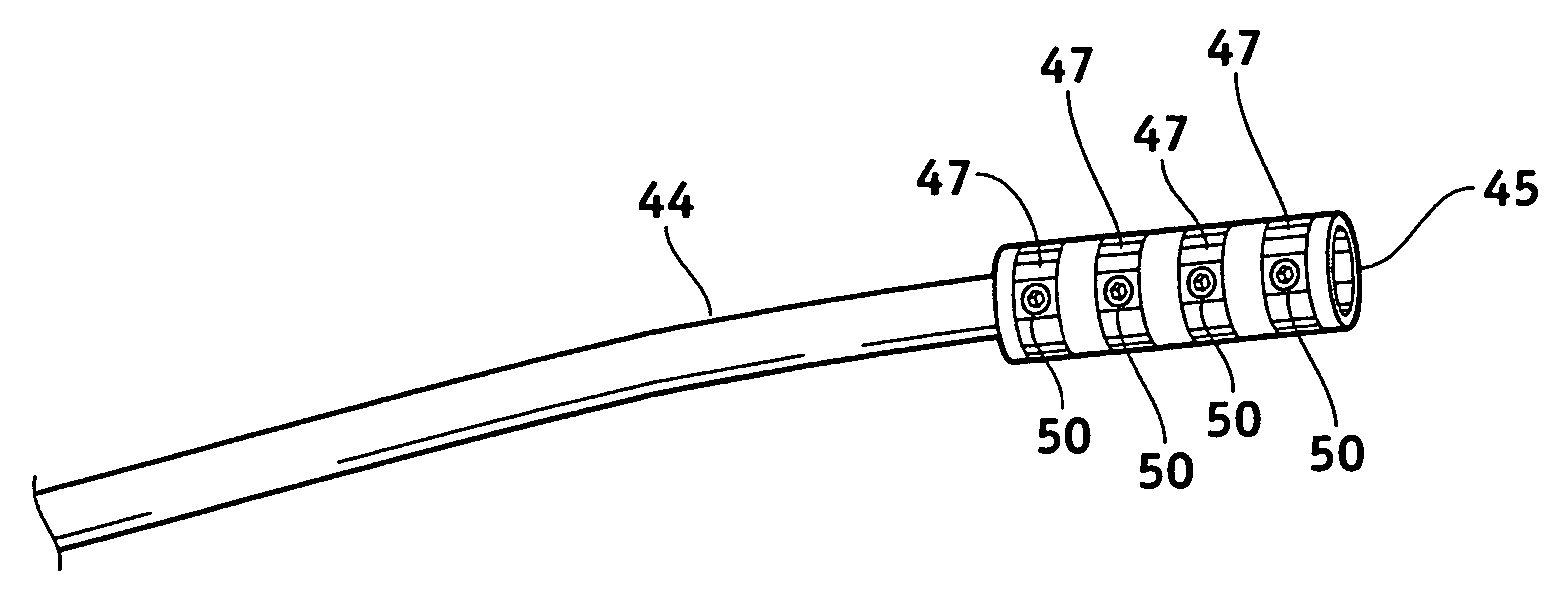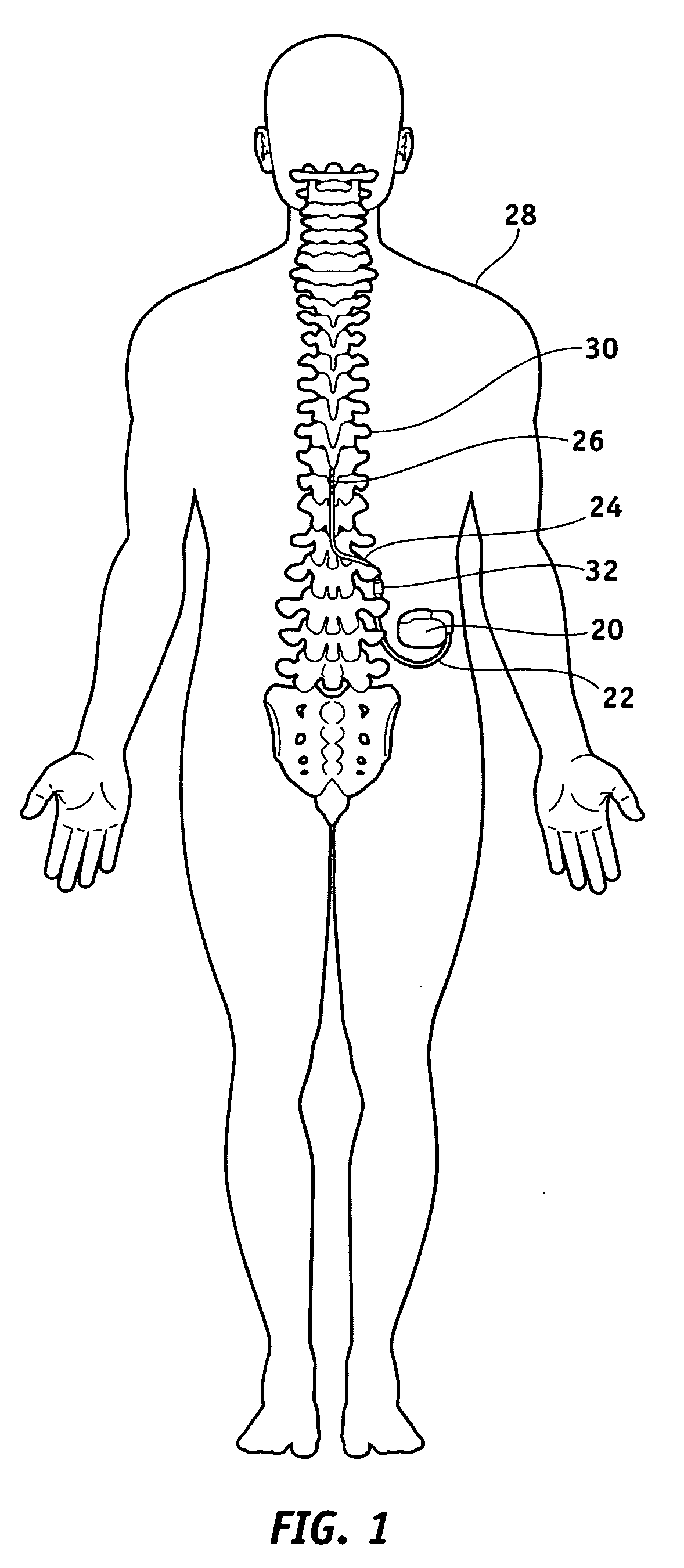MRI-safe implantable medical device
a medical device and implantable technology, applied in the field of implantable medical devices, can solve the problems of unfavorable mri scanning, potential risk associated with undesirable interaction between the mri environment and the above-described neurostimulation system, and achieve the effect of high absolute impedan
- Summary
- Abstract
- Description
- Claims
- Application Information
AI Technical Summary
Benefits of technology
Problems solved by technology
Method used
Image
Examples
example 1
[0052] In the case of a 28 centimeter wound filer lead having a diameter of 0.05 inch and four turns per inch (i.e. approximately 44 turns for the entire lead), Equation (3) yields an inductance of approximately 1.1 μH. Substituting this value of inductance into Equation (2) yields an absolute impedance of 442 ohms.
example 2
[0053] The DC resistance of a 0.005 inch diameter MP35N straight 28 centimeters filer is approximately 40 ohms. If it is assumed that only inductance can be varied to achieve an impedance in the range of 375 to 2000 ohms at 64 MHz, the inductance, as determined by Equation 2, should be approximately 1.0 μH to 5 μH. At 128 MHz, this range of inductance yields an impedance of approximately 804 to 4000 ohms. For a preferred impedance of 600 ohms, the inductance is approximately 1.5 μH.
example 3
[0054] Optimal impedance at MR frequencies is best obtained through a combination of impedance and inductance. Assume a helically coiled (approximately five turns per inch), 28 centimeter long braided stranded wire lead having a diameter of 0.002 inch. Equation 3 tells us that the inductance is approximately 1.72 μH. Substitution into Equation 2 yields an impedance of j691 ohms. The DC resistance of such a lead is approximately 126 ohms. Therefore, Z=126+j691 ohms. Thus,
|Z|=(1262+6912)1 / 2 or 703 ohms
[0055] One known helically wound lead has a DC resistance of approximately 3.3 ohms / centimeter. Thus, the DC resistance of 28 centimeter lead is approximately 92.4 ohms, and that of a 100 centimeter lead is approximately 330 ohms. The inductance of this known lead is approximately 31 nH / centimeter. Given this information and utilizing Equations (1) and (2), the impedance of known leads is approximately 9.0 ohms / centimeter at 43 MHz, 12.9 ohms / centimeter at 64 MHz, and 25.1 ohms / centime...
PUM
 Login to View More
Login to View More Abstract
Description
Claims
Application Information
 Login to View More
Login to View More - R&D
- Intellectual Property
- Life Sciences
- Materials
- Tech Scout
- Unparalleled Data Quality
- Higher Quality Content
- 60% Fewer Hallucinations
Browse by: Latest US Patents, China's latest patents, Technical Efficacy Thesaurus, Application Domain, Technology Topic, Popular Technical Reports.
© 2025 PatSnap. All rights reserved.Legal|Privacy policy|Modern Slavery Act Transparency Statement|Sitemap|About US| Contact US: help@patsnap.com



